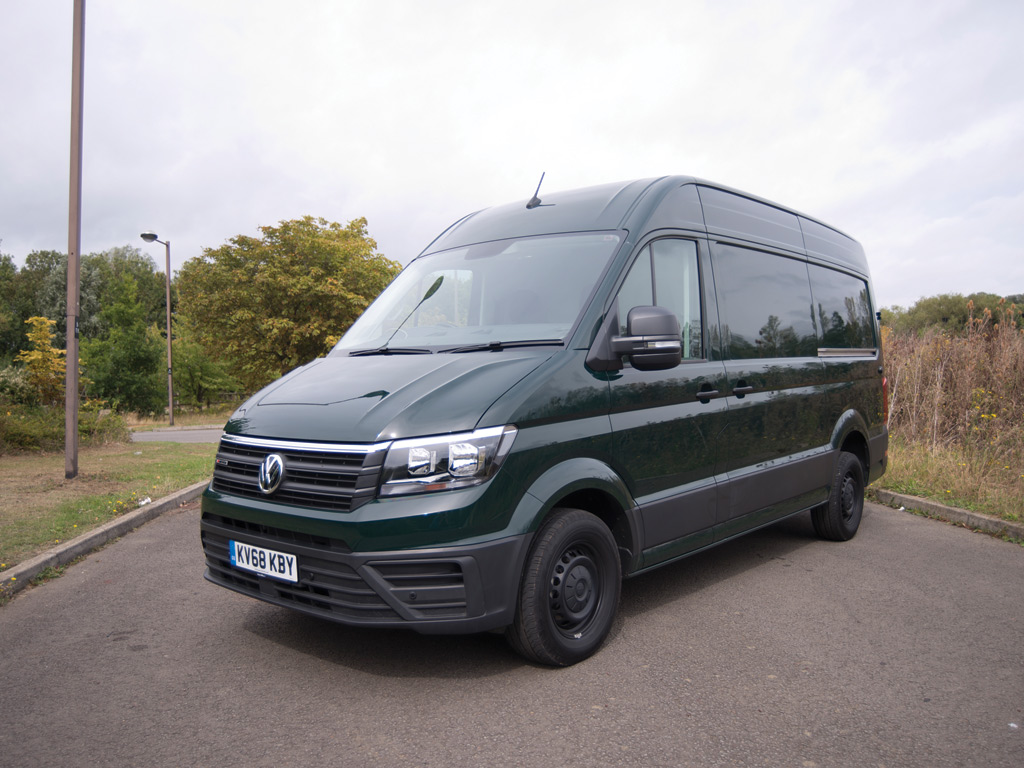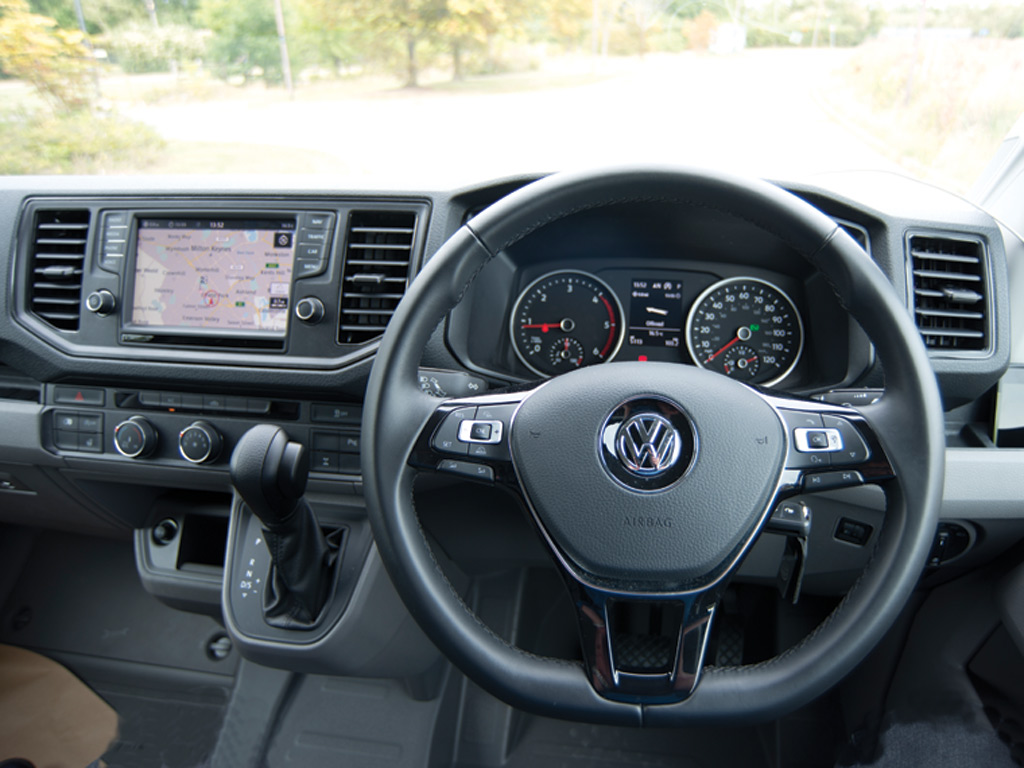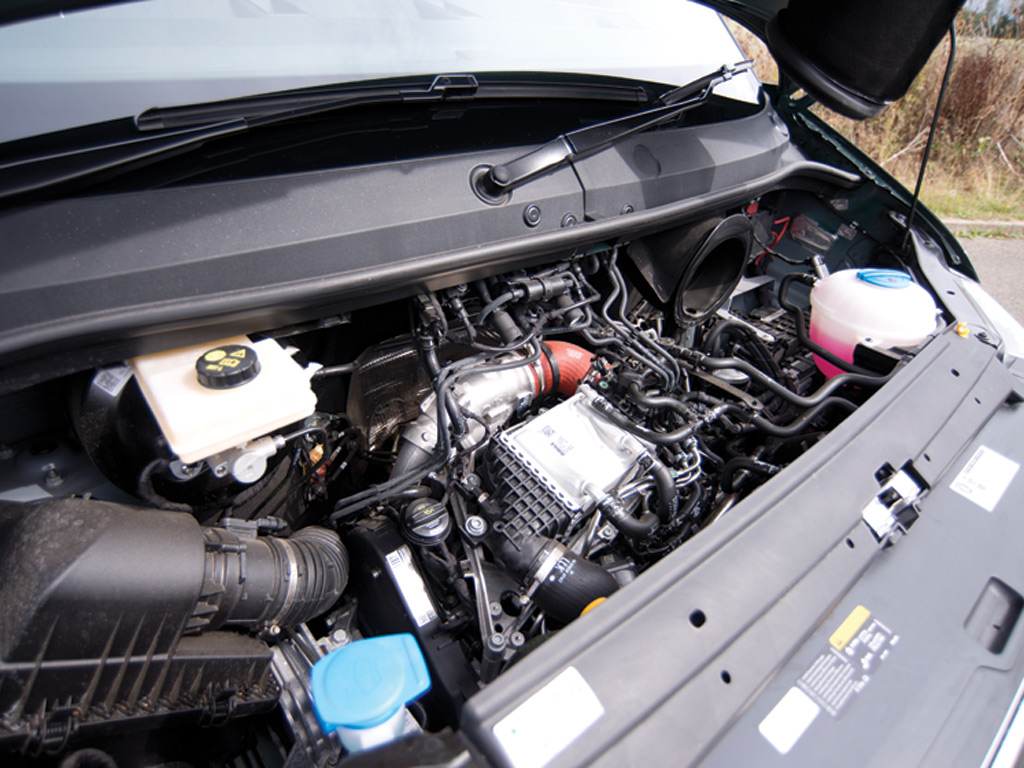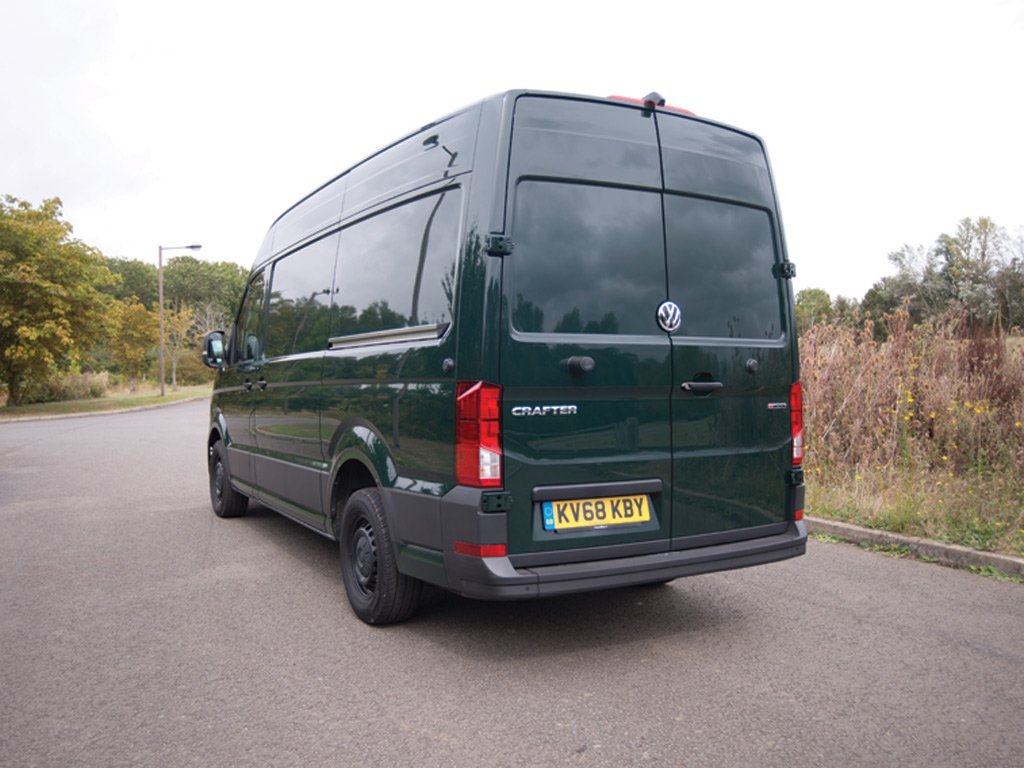Unassuming looks hide a highly competent all-wheel drive load hauler, says Dan Gilkes.
Volkswagen’s Crafter has become a familiar sight on UK roads, offering a wide choice of models for large van buyers. With a wide line-up – offering front-, rear- and all-wheel drive, manual and automatic transmissions, a host of body lengths and roof heights, it is little wonder that Volkswagen had to introduce the latest Crafter to market in various stages.
The popular front-driven vans came first, initially in manual form, followed by rear-wheel drive and then automatics. In the middle of that, 4Motion all-wheel drive, which admittedly will appeal to fewer buyers, almost slipped under the radar.
Front-wheel drive vans can be had with 102hp, 140hp or 177hp versions of VW’s 2.0-litre diesel engine, while rear-drivers are offered with 122hp, 140hp and 177hp. For the 4Motion model, the choice is limited to the 140hp or the 177hp engines, with a six-speed manual gearbox on either, or an eight-speed automatic transmission as an option on the 177hp van. This MWB CR35, equipped with the 177hp engine, the eight-speed automatic transmission and 4Motion all-wheel drive, pretty much has it all.
Unlike some competitors, which major on the off-road credentials of their four-wheel drive models, you would be hard-pressed to spot that this Crafter is driven at both ends. It’s the same story on the road, where the big VW behaves much like any other Crafter.
This is in part due to the 4Motion system, which is based on the front-wheel drive van, with power also taken to the rear wheels, rather than being primarily a rear-drive with the power taken to the front axle when needed.
While there is absolutely nothing wrong with VW’s six-speed manual gearbox, the eight-speed automatic is even better, swapping gears unnoticed and ensuring that the powerful 2.0-litre engine is always ready to push the van forward when needed. It also ensures that the engine remains in its relatively slim maximum torque band of 1,500-2,000rpm.
Though carrying a premium initially, the auto doesn’t have to add to the running costs, with both the manual and auto 4Motion vans claiming up to 31.7mpg* on the combined cycle and 234g/km of CO2* in this 177hp form.
There is however a slight drop in available payload for the auto versus the manual, though it will hardly be a deal-breaker. Also, as the van is based on the front-drive chassis, trailer weights fall to 3.0-tonnes for the 4Motion van, against 3.5-tonnes for a rear-wheel driven model.
When you do need the additional grip and traction of a four-wheel drive system, there is no need for the driver to stop or flick switches to engage the second axle, as 4Motion handles all of that automatically. Having driven the 4Motion model off-road at launch events, we can also confirm that, while not an out-and-out mud-plugger like Iveco’s Daily 4×4, it is more than capable on rough terrain.
The Verdict
For those that require the additional tractive effort, the 4Motion Crafter delivers in style.
FW Rating: ****





